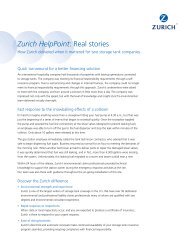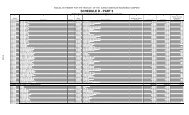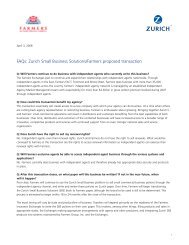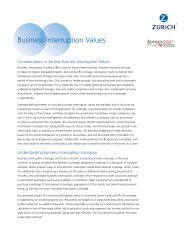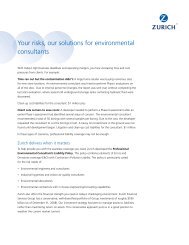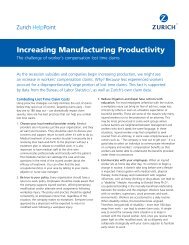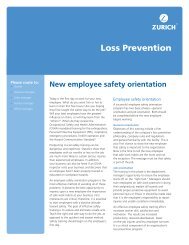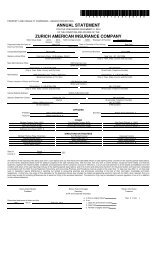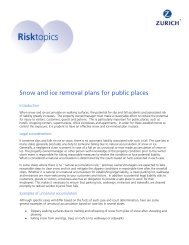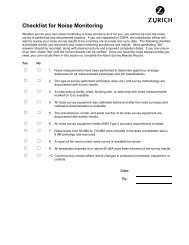Know the risks - Zurich
Know the risks - Zurich
Know the risks - Zurich
You also want an ePaper? Increase the reach of your titles
YUMPU automatically turns print PDFs into web optimized ePapers that Google loves.
Liabilities under <strong>the</strong> federalsecurities lawsSecurities Act of 1933“The statute imposes strictliability for any false materialrepresentation or omission in<strong>the</strong> registration statement.”Congress enacted <strong>the</strong> Securities Act of 1933 (1933 Act) in reaction to <strong>the</strong> real andperceived abuses in <strong>the</strong> issuance of securities that resulted in <strong>the</strong> Wall Street crashof 1929. Subject to certain exemptions, <strong>the</strong> 1933 Act requires <strong>the</strong> registration ofsecurities being offered to <strong>the</strong> public. The 1933 Act requires full and fair disclosureof all material facts necessary for investors to evaluate whe<strong>the</strong>r to purchase, sell orhold <strong>the</strong> security. The most common allegation in suits seeking relief under <strong>the</strong> 1933Act is that a prospectus, registration statement, or attachments to <strong>the</strong> registrationstatement filed in connection with <strong>the</strong> public issuance of securities violated violated<strong>the</strong> Act because <strong>the</strong>y contained material misstatements or omissions of materialfacts in connection with an offering. Plaintiffs often allege that <strong>the</strong> financialstatements incorporated into <strong>the</strong> prospectus and registration statement materiallymisrepresented <strong>the</strong> true financial condition of <strong>the</strong> corporation issuing <strong>the</strong> securities.Section 11 suits are commonly brought as class actions against <strong>the</strong> corporation, itsdirectors, any officers that signed <strong>the</strong> registration statement, and o<strong>the</strong>rs. Section15 of <strong>the</strong> 1933 Act additionally imposes “controlling person” liability on o<strong>the</strong>rdefendants to <strong>the</strong> same extent as <strong>the</strong> primary violator.In order to establish a prima facie case under Section 11, a plaintiff need not allegeany form of fraud or even negligent conduct on <strong>the</strong> part of <strong>the</strong> defendants. Ra<strong>the</strong>r,<strong>the</strong> statute imposes strict liability for any false material representation or omission in<strong>the</strong> registration statement.Section 12(2) of <strong>the</strong> 1933 Act similarly gives purchasers of a security a remedyagainst <strong>the</strong> offer or seller of a security for misstatements or omissions in connectionwith <strong>the</strong> security’s offer or sale. If successful, <strong>the</strong> plaintiff in a Section 12(2) case isentitled to a return of <strong>the</strong> purchase price of <strong>the</strong> security. A seller is not liable if <strong>the</strong>seller did not know or in <strong>the</strong> exercise of reasonable care could not have known of<strong>the</strong> untruth or <strong>the</strong> omission. Under some circumstances, directors may be held liableas “sellers” under Section 12(2).Securities Exchange Act of 1934The Securities Exchange Act of 1934 (1934 Act) regulates <strong>the</strong> public trading ofsecurities. The 1934 Act requires public companies to file detailed quarterly, annualand o<strong>the</strong>r reports with <strong>the</strong> SEC. The most commonly invoked provision concerningliability in <strong>the</strong> 1934 Act is Section 10(b), as implemented by Rule l0b-5. Under Rulel0b-5, in connection with <strong>the</strong> purchase or sale of any security, it is unlawful for anyperson to:15Financial institutions guide



